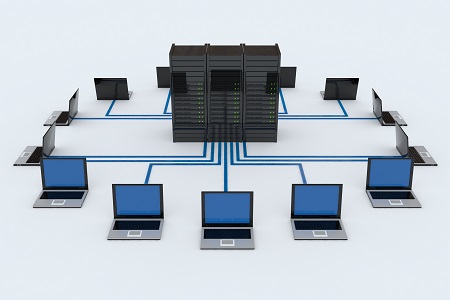Server replacements only come around every five years or so for most companies, which is a good thing given the high costs of replacing them. And while the servers themselves are expensive, they represent only a fraction of the costs incurred. Replacing a server generally means upgrading to new operating systems, often with new hardware interfaces and network protocols. This tends to affect other software and hardware in use, in some cases rendering it incompatible with the new server because it’s fallen out of date.
All of this means that replacing a server often means rethinking other parts of your network. In fact, it’s the best time to consider whether the technology strategy you’ve set in place is still the best one for your company. Here are three questions you should answer before you make any final decisions on a major server replacement. Your IT team should be providing answers and recommendations on these things well before your server warranties expire, giving you time to make decisions on hardware replacement.
How Will I Be Using This Hardware Five Years From Now?
Because server replacements happen infrequently, the decisions being made will impact your company for years. Spend too little on server capability and expandability, and you may find yourself pressed into an early hardware replacement. Spending too much on high-end server components isn’t a good idea either, however, as it will reduce margins with no real business benefit. An experienced engineer should be able to take your five-year business plan and determine what server hardware will put you in the best shape to accomplish that plan without being boxed in by your technology.
Will the Team Selecting and Installing This Hardware Be the Team Managing It?
When a server is installed, it’s often done with a specific technology plan in place. The team managing your network will be better equipped to manage your hardware if they know why it was configured the way it was. That’s why a server installation is a great time to evaluate your current technology team. If you’re outsourcing IT, this is one of the best times to switch to another provider, or to upgrade to a higher level of service if your current service isn’t meeting your needs. If you’re using an internal team, it’s a good time to consider supplementing it, if necessary.
Should Any of the Functions This Server Performs Be Outsourced to the Cloud?
Cloud-based applications have a range of benefits. They’re always up-to-date. They always have the hardware they need. The pricing is monthly, rather than one large bill every few years.
However, they aren’t the perfect solution that many people think they are. Backups aren’t guaranteed, or even provided by many cloud application providers. Balancing access and security can be complex. You need a lot of bandwidth to use some applications through the cloud.
Before you spend thousands of dollars on a new server, one important question to ask is if you’ll be better served by having the applications provided by that server in the cloud instead? If so, that’s a great opportunity to reduce (or possibly eliminate) one of your server replacement bills entirely.
To learn more about what it takes to experience a seamless server replacement, call WingSwept at (919) 600-5190 or email Team_WingSwept@WingSwept.com and ask about our Managed Services offering.

